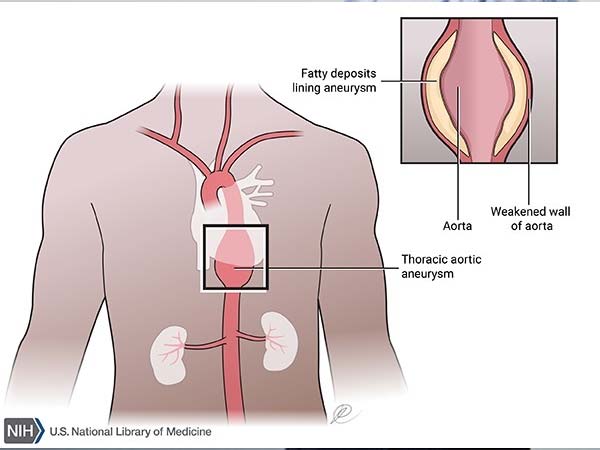Routine screening of relatives of aortic disease patients could save lives
A research team led by the University of Leicester has published a new study in the Journal of the American Heart Association which shows that over 30% of relatives of patients suffering from thoracic aortic diseases (TAD) have an underlying genetic predisposition to developing an aortic disease themselves.
 TAD, including aneurysms and dissections, are often silent entities until they become life-threatening emergencies, at which point they have a high chance of mortality approaching 80%.
TAD, including aneurysms and dissections, are often silent entities until they become life-threatening emergencies, at which point they have a high chance of mortality approaching 80%.
The study, which is part-funded by the British Heart Foundation, highlights the importance of routine imaging and genetic testing of relatives of patients affected by TAD in order to identify the diseases early.
The research also suggests that current guidelines for the condition are likely to result in the under-treatment of patients who are potentially at-risk, particularly as screening is not routinely performed in the UK.
Dr Giovanni Mariscalco, Associate Professor from the University of Leicester and Honorary Consultant Cardiothoracic Surgeon at Leicester’s Hospitals, who led the study, said: “Our research identifies important knowledge gaps with respect to the predictive accuracy of commonly used screening tests across patients with thoracic aortic diseases.
“The evidence suggests that screening of first – and second-degree relatives of patients affected by familial non-syndromic thoracic aortic diseases, and first-degree relatives of those affected by sporadic TAD will result in a significant number of patients being diagnosed who would otherwise remain unaware they suffer from the disease, which could potentially save lives.”
Welcoming the publication of this research, Gareth Owens, Chair of Aortic Dissection Awareness (UK & Ireland) said: “Traditionally, Aortic Dissection has been regarded by the medical profession as a ‘silent killer’, striking mainly the over-65s, with little opportunity for prediction or prevention. Sadly, we know of many patients in the UK and Ireland who died suddenly due to a lack of appropriate screening. Patients who survive Aortic Dissection say their #1 worry is that close relatives may also be affected by the condition.
“This research shows that there is a significant cohort of up to 30% of patients, including many younger patients, in whom a genetic predisposition to Aortic Dissection can and should be detected through appropriate screening. Prevention is always better than cure. Dr Mariscalco and his team are to be congratulated on highlighting this issue. We expect that changes to national screening programmes as a result of this research will save lives, by improving the prevention, detection and treatment of Aortic Dissection.”
Professor Gavin Murphy, British Heart Foundation Professor of Cardiac Surgery at the University of Leicester, said: “This study involved a combination of genetic and imaging tests, including echocardiogram, CT-scan and MRI of the aorta. All of these tests could easily be adopted as simple and quick routine screening tools to identify relatives of patients at risk for aortic diseases. Now that we have a better idea of the percentage of relatives of people with aortic diseases who are also likely to suffer with the condition we can start to ascertain the financial viability of introducing routine screening for this at risk group.”
Source: University of Leicester
Full bibliographic information
The paper, ‘Systematic Review of Studies that Have Evaluated Screening Tests in Relatives of Patients Affected by Non-Syndromic Thoracic Aortic Disease’, published in the Journal of the American Heart Association
Originally published 31 Jul 2018 Journal of the American Heart Association. 2018;7:e009302

